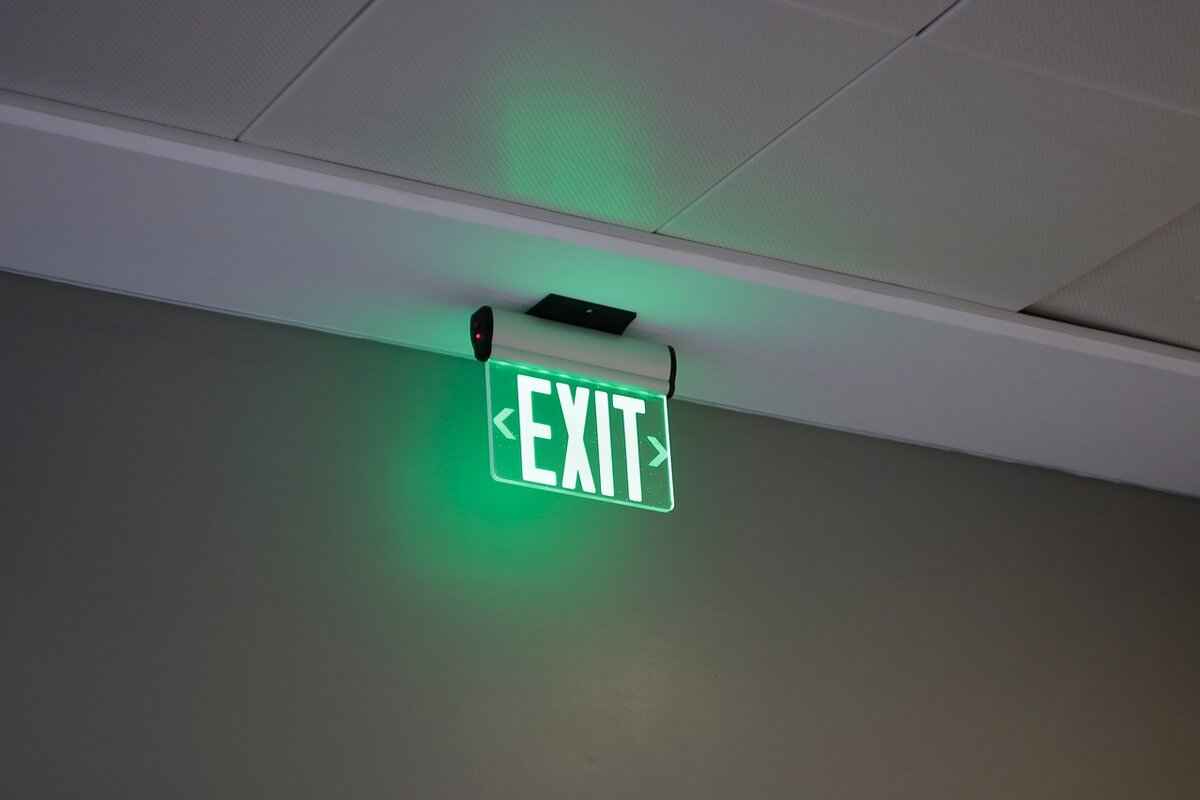This article provides essential information on identifying asbestos in popcorn ceilings, including testing methods, safety precautions, and expert insights to ensure a safe living environment.
Understanding Popcorn Ceilings
Popcorn ceilings, often referred to as acoustic ceilings, gained popularity in homes during the 1950s to the 1980s due to their ability to absorb sound and hide imperfections. These textured ceilings were frequently made with materials that contained asbestos, especially in older homes. Recognizing the composition of popcorn ceilings is vital for homeowners, as the presence of asbestos poses significant health risks.
What is Asbestos and Why is it Dangerous?
Asbestos is a naturally occurring mineral known for its durability and fire-resistant properties. However, when disturbed, it releases tiny fibers into the air that can be inhaled. Prolonged exposure to asbestos fibers can lead to severe health issues, including lung cancer, asbestosis, and mesothelioma. Understanding the dangers associated with asbestos is crucial for maintaining a safe living environment.
Signs Your Popcorn Ceiling May Contain Asbestos
- Ceiling texture: If your ceiling has a bumpy or textured surface, it may be a sign of asbestos.
- Age of the home: Homes built before the late 1970s are more likely to contain asbestos.
- Renovation history: If your home has undergone renovations, check if materials used contained asbestos.
Being aware of these indicators can help homeowners take the necessary steps to assess potential asbestos risks.
When Was Asbestos Commonly Used in Popcorn Ceilings?
Asbestos was widely used in construction materials until regulations began to restrict its use in the late 1970s. Understanding this timeline is crucial for homeowners assessing the risk of asbestos in their homes. If your popcorn ceiling was installed during this period, it is important to consider the possibility of asbestos contamination.
How to Test for Asbestos in Popcorn Ceilings
Testing for asbestos involves several steps to ensure accurate results. Homeowners can collect samples of the ceiling material and send them to a certified laboratory for analysis. It’s essential to follow proper guidelines to minimize exposure and contamination during the sampling process.
DIY Testing Methods
While some homeowners may consider DIY testing methods for convenience, these approaches come with risks. Collecting samples without proper precautions can release harmful asbestos fibers into the air. It is crucial to wear protective gear and follow safety protocols if opting for DIY methods.
Professional Testing Services
Hiring a certified asbestos testing professional is often the safest choice. These experts are trained to handle hazardous materials safely and can provide accurate testing results. Professional services not only ensure safety during the sampling process but also offer peace of mind to homeowners concerned about asbestos exposure.
Safety Precautions When Testing for Asbestos
Safety is paramount when dealing with potential asbestos. Before testing, ensure the area is well-ventilated, and wear appropriate protective gear, including masks and gloves. After testing, avoid disturbing the area until results are obtained to minimize the risk of exposure.
What to Do if Asbestos is Detected
If asbestos is confirmed in your popcorn ceiling, immediate action is necessary. Consider hiring a licensed asbestos abatement contractor to safely remove or encapsulate the asbestos-containing material. It is important to follow local regulations and guidelines regarding asbestos handling to ensure safety.
Common Myths About Asbestos in Popcorn Ceilings
Debunking common myths about asbestos is essential for promoting awareness. Many believe that simply painting over asbestos-containing materials makes them safe, which is not true. Understanding the facts about asbestos can help homeowners make informed decisions regarding their health and safety.
Legal Regulations Regarding Asbestos in Homes
Homeowners should familiarize themselves with local regulations governing asbestos testing and removal. Various laws exist to protect residents from asbestos exposure, and understanding these regulations is crucial for ensuring compliance and safety.
Long-Term Health Effects of Asbestos Exposure
Long-term exposure to asbestos can lead to serious health consequences. Recognizing the potential risks associated with asbestos exposure emphasizes the importance of early detection and intervention. Regular inspections and testing can help mitigate these risks and ensure a safer living environment.

Understanding Popcorn Ceilings
Popcorn ceilings, often referred to as acoustic ceilings, gained immense popularity from the 1950s through the 1980s due to their ability to reduce noise and hide imperfections. These textured ceilings were a common choice in many homes, particularly in living rooms and hallways, as they provided a stylish yet practical solution for homeowners. However, the composition of these ceilings is critical, especially when considering the potential presence of asbestos.
Many homeowners may be unaware that the texture of popcorn ceilings is often created using a mixture that can include various materials, including asbestos. Asbestos was widely used in construction materials until the late 1970s, primarily for its fire-resistant qualities. It is crucial to understand that while not all popcorn ceilings contain asbestos, those installed before the ban on asbestos use are at a higher risk. If your home was built prior to 1980, it is essential to exercise caution.
The presence of asbestos in popcorn ceilings can pose significant health risks. When disturbed, asbestos fibers can become airborne and, when inhaled, lead to severe respiratory issues, including lung cancer and mesothelioma. Therefore, identifying whether your popcorn ceiling contains asbestos is crucial for your safety and that of your family.
To determine the likelihood of asbestos in your popcorn ceiling, consider the following factors:
- Age of the Home: If your home was constructed before the 1980s, the chance of having asbestos-containing materials is higher.
- Texture and Appearance: Popcorn ceilings that have a rough, bumpy texture are more likely to contain asbestos.
- Renovation History: If your home has undergone renovations or repairs, check if any old materials were left intact.
If you suspect that your popcorn ceiling may contain asbestos, it is advisable to avoid disturbing it. Instead, consider hiring a professional for testing. They can safely collect samples and send them to a laboratory for analysis, ensuring accurate results without risking exposure.
In summary, understanding popcorn ceilings and their potential asbestos content is vital for maintaining a safe home environment. Always prioritize safety and seek professional advice when dealing with any suspected asbestos-containing materials.

What is Asbestos and Why is it Dangerous?
Asbestos is a naturally occurring mineral that has been utilized for its remarkable properties, particularly its fire resistance and durability. This mineral has been widely used in various construction materials, insulation, and even automotive parts. However, the same fibers that make asbestos so useful also pose significant health risks when they become airborne and are inhaled.
When asbestos fibers are disturbed, they can break into tiny particles that linger in the air. Once inhaled, these fibers can become trapped in the lungs and other tissues, leading to serious health issues over time. One of the most alarming aspects of asbestos exposure is that many of the diseases associated with it, such as lung cancer and mesothelioma, often take decades to manifest. This long latency period can lead to a false sense of security among homeowners and workers who may believe they are safe from exposure.
Health Risks Associated with Asbestos Exposure
The health risks associated with asbestos exposure are severe and well-documented. Prolonged exposure can lead to several serious conditions, including:
- Lung Cancer: Asbestos exposure significantly increases the risk of developing lung cancer, especially among smokers.
- Mesothelioma: This rare and aggressive cancer primarily affects the lining of the lungs and abdomen and is almost exclusively linked to asbestos exposure.
- Asbestosis: A chronic lung condition caused by inhaling asbestos fibers, leading to scarring of lung tissue and difficulty breathing.
- Other Cancers: There is also evidence linking asbestos exposure to cancers of the larynx, ovary, and gastrointestinal tract.
Why is it Vital to Identify Asbestos?
Identifying the presence of asbestos in homes, especially in older properties, is crucial for several reasons. First and foremost, it helps mitigate health risks for current and future occupants. Knowing whether asbestos is present allows homeowners to make informed decisions about remediation or safe management of the material.
Regulatory Guidelines and Recommendations
Various health organizations, including the Environmental Protection Agency (EPA) and the Occupational Safety and Health Administration (OSHA), provide guidelines on handling asbestos. These guidelines emphasize the importance of professional testing and remediation to ensure safety. Homeowners are advised not to disturb suspected asbestos materials, as this can lead to fiber release and increased exposure risk.
In summary, while asbestos has useful properties, its dangers cannot be overstated. Understanding what asbestos is and the health risks it poses is essential for maintaining a safe living environment. With proper identification and management, the risks associated with asbestos exposure can be significantly reduced, protecting both current and future generations from its harmful effects.

Signs Your Popcorn Ceiling May Contain Asbestos
Popcorn ceilings, often referred to as acoustic ceilings, were a popular choice in many homes built before the 1980s. While their textured appearance can add character to a room, they may also pose serious health risks if they contain asbestos. Understanding the signs that indicate the presence of asbestos in popcorn ceilings is crucial for homeowners. Below are some key characteristics to consider.- Age of the Ceiling: One of the most significant indicators of asbestos presence is the age of your popcorn ceiling. Homes built before the late 1970s are more likely to contain asbestos, as it was a common additive in construction materials during that time.
- Texture and Appearance: Popcorn ceilings have a distinctive bumpy or textured surface. If your ceiling has this texture and was installed in an older home, it may contain asbestos. Asbestos fibers were often mixed into the ceiling material to enhance its acoustic properties.
- Renovation History: If your home has undergone renovations, it’s important to consider the materials used during those updates. If the popcorn ceiling was disturbed or removed during renovations, asbestos fibers could have been released into the air.
- Type of Material: The specific material used for the popcorn ceiling can also be a clue. If the ceiling material feels crumbly or powdery, it may contain asbestos. In contrast, ceilings made from modern materials are typically more durable and less likely to contain harmful substances.
- Previous Testing: If your home has been tested for asbestos in the past and found to contain it, this is a clear sign that your popcorn ceiling may also be a risk. Homeowners should keep records of any previous inspections or tests conducted.
Recognizing these signs can empower homeowners to take the necessary steps to ensure safety. If you suspect that your popcorn ceiling may contain asbestos, it is advisable to seek professional testing. Avoid disturbing the ceiling until a thorough assessment has been conducted, as this could release harmful fibers into the air.
In addition to these signs, it’s essential to remain informed about the potential health risks associated with asbestos exposure. Asbestos fibers, when inhaled, can lead to serious respiratory diseases, including lung cancer and mesothelioma. Therefore, understanding the risks and taking appropriate action can significantly enhance your safety and well-being.
In summary, being aware of the signs that may indicate asbestos in popcorn ceilings is vital for homeowners, especially those living in older properties. By recognizing the age, texture, and material of the ceiling, as well as considering renovation history and previous testing, homeowners can make informed decisions regarding their living environment.

When Was Asbestos Commonly Used in Popcorn Ceilings?
Asbestos was a popular material in construction, particularly in the mid-20th century, due to its excellent fire-resistant properties and affordability. Specifically, popcorn ceilings, also known as acoustic ceilings, gained popularity in homes across North America from the 1950s until the late 1970s. Understanding the timeline of asbestos use in these ceilings can significantly affect homeowners’ assessments of potential health risks associated with their properties.
- Pre-1950s: Before the widespread use of asbestos, many homes featured traditional plaster ceilings. These ceilings were labor-intensive and costly, leading to a demand for more affordable alternatives.
- 1950s-1970s: The introduction of popcorn ceilings coincided with the rise of asbestos use in construction. As manufacturers sought to provide a cost-effective and visually appealing ceiling option, they incorporated asbestos into the texture of popcorn ceilings. This period saw a surge in the installation of these ceilings in residential and commercial buildings.
- Late 1970s: By the late 1970s, growing awareness of the health risks associated with asbestos exposure led to a decline in its use. The Environmental Protection Agency (EPA) and other regulatory bodies began to impose stricter guidelines on the use of asbestos in building materials, including popcorn ceilings.
Understanding this timeline is crucial for homeowners, especially those living in older homes. If your home was built or renovated during the 1950s to late 1970s, there is a higher likelihood that asbestos may be present in the popcorn ceiling.
Assessing Risk Based on Home Age
Homeowners should be vigilant about the age of their property when evaluating potential asbestos risks. For homes built before 1978, it is advisable to assume that asbestos may be present unless proven otherwise. This assumption is particularly important for those considering renovations or repairs, as disturbing asbestos-containing materials can release harmful fibers into the air.
Renovation History
Additionally, the renovation history of a home can provide valuable insights. If previous owners made alterations to the ceiling or other areas of the house, it is essential to understand whether those modifications involved any asbestos-containing materials. Homeowners should gather any available documentation regarding past renovations to assess the risk accurately.
In summary, recognizing the timeline of asbestos use in popcorn ceilings is vital for homeowners. By understanding when asbestos was commonly used and the implications of their home’s age and renovation history, homeowners can make informed decisions regarding testing and remediation. This awareness not only aids in maintaining a safe living environment but also helps in planning future renovations without compromising health and safety.

How to Test for Asbestos in Popcorn Ceilings
Testing for asbestos in popcorn ceilings is a crucial step for homeowners concerned about potential health risks. Asbestos fibers, when disturbed, can become airborne and pose serious health issues. Therefore, understanding how to test for asbestos safely and effectively is essential. Below are the steps involved in the testing process, along with important safety precautions.
Step 1: Gather Necessary SuppliesBefore starting the testing process, gather the following materials:
- Protective gear (mask, gloves, goggles)
- Plastic bags for sample collection
- A utility knife or scraper
- Moistening agent (water in a spray bottle)
Step 2: Prepare the AreaEnsure that the area is well-ventilated and that no one else is present in the vicinity. It is advisable to seal off the testing area to prevent the spread of potential asbestos fibers. Use plastic sheeting to cover floors and furniture.
Step 3: Collecting SamplesTo collect a sample, lightly moisten the section of the popcorn ceiling you intend to test. This will help minimize dust. Carefully scrape a small section of the ceiling into a plastic bag, ensuring you collect enough material for analysis. It is recommended to take samples from multiple locations to ensure accuracy.
Step 4: Label and Seal SamplesClearly label each sample bag with the location and date of collection. Seal the bags securely to prevent any leakage.
Step 5: Send Samples for Laboratory AnalysisLocate a certified laboratory that specializes in asbestos testing. Follow their instructions for submission, which may include filling out forms and providing information about the samples.
Step 6: Await ResultsLaboratories typically take a few days to process samples. Once you receive the results, you can determine the next steps based on the presence or absence of asbestos.
Safety PrecautionsTesting for asbestos can be risky. Always wear protective gear during sample collection to avoid inhaling any fibers. If you suspect a large presence of asbestos, consider hiring a professional for testing and remediation.
By following these steps and precautions, homeowners can effectively test for asbestos in popcorn ceilings, ensuring a safer living environment. Remember, if asbestos is detected, seek professional help for safe removal and remediation.
DIY Testing Methods
Homeowners often consider for assessing the presence of asbestos in popcorn ceilings due to their convenience and perceived cost-effectiveness. However, it is crucial to recognize that these methods come with inherent risks and limitations that can compromise safety and accuracy. Understanding these factors is essential before proceeding with any sample collection.
One of the primary concerns with DIY testing is the potential for contamination. When homeowners attempt to collect samples without proper training or equipment, they may inadvertently release asbestos fibers into the air, increasing the risk of inhalation. This is particularly dangerous, as even brief exposure to asbestos can have serious health implications.
Moreover, the accuracy of DIY tests can be questionable. Many at-home testing kits claim to provide results quickly and inexpensively, but they often lack the rigorous standards of professional laboratory analysis. The reliability of these tests can vary significantly, leading to false positives or negatives. Homeowners may find themselves in a false sense of security or, conversely, unnecessarily alarmed.
To mitigate risks, it is essential to follow specific precautions if you choose to undertake DIY testing:
- Wear appropriate personal protective equipment (PPE), including masks, gloves, and goggles.
- Seal off the area where sampling will occur to prevent fiber dispersion.
- Use a damp cloth to minimize dust and fiber release when taking samples.
- Ensure proper disposal of any materials used during the sampling process.
After collecting samples, homeowners must send them to a certified laboratory for analysis. This step is critical, as only accredited labs can provide accurate results regarding asbestos presence. Remember that even if a DIY kit claims to offer immediate results, the best course of action is to rely on professional testing to ensure safety.
In conclusion, while DIY testing methods may seem appealing for their convenience, the associated risks and limitations cannot be overlooked. Homeowners should weigh these factors carefully and consider seeking professional assistance to ensure a safe and accurate assessment of asbestos in their popcorn ceilings.
Professional Testing Services
When it comes to identifying asbestos in popcorn ceilings, hiring a certified asbestos testing professional is a crucial step that can provide peace of mind for homeowners. The risks associated with asbestos exposure are severe, making it essential to ensure that any testing is conducted with the utmost accuracy and safety.
One of the primary benefits of opting for professional testing services is the accuracy of results. Certified professionals utilize advanced techniques and equipment to collect samples, ensuring that the analysis is thorough. Unlike DIY methods, which may yield inconclusive or misleading results, professionals are trained to follow strict protocols that minimize contamination and ensure reliable outcomes. This level of expertise not only increases the likelihood of detecting asbestos but also helps in accurately determining the extent of any contamination.
Safety is another significant advantage of hiring professionals for asbestos testing. Asbestos fibers can become airborne during sampling, posing a risk to anyone in the vicinity. Professionals are equipped with the necessary protective gear and follow established safety procedures to mitigate these risks. They are trained to handle hazardous materials safely, ensuring that the testing process does not inadvertently expose homeowners or their families to harmful asbestos fibers.
Furthermore, certified asbestos testing professionals can provide valuable insights and recommendations based on their findings. After conducting the tests and analyzing the results, they can guide homeowners on the next steps, whether that involves remediation or monitoring the situation. Their expertise can help homeowners understand their options and make informed decisions that prioritize health and safety.
In addition to accuracy and safety, hiring a professional also ensures compliance with local regulations regarding asbestos testing and removal. Many regions have specific laws governing how asbestos should be handled, and certified professionals are well-versed in these regulations. This knowledge can prevent potential legal issues and ensure that the testing and any subsequent actions are conducted in accordance with the law.
Moreover, professional testing services often provide a comprehensive report detailing the findings, which can be invaluable for future reference. This documentation can serve as a record for real estate transactions, insurance claims, or any necessary remediation efforts.
In conclusion, while DIY testing methods may seem convenient, they come with significant risks and limitations. By hiring a certified asbestos testing professional, homeowners can benefit from accurate results, enhanced safety, and expert guidance. This investment not only protects health but also helps maintain a safe living environment for all occupants.

Safety Precautions When Testing for Asbestos
When it comes to asbestos testing in popcorn ceilings, safety should always be your top priority. Asbestos is a hazardous material that can pose serious health risks if disturbed, leading to inhalation of toxic fibers. Therefore, it is crucial to take appropriate precautions before, during, and after the testing process to protect yourself and others in your home.
- Before Testing
- Ensure that you wear appropriate personal protective equipment (PPE), including a high-quality respirator, gloves, and goggles. This gear will help minimize exposure to airborne asbestos fibers.
- Seal off the area where testing will take place. Use plastic sheeting to cover doors and vents to prevent cross-contamination with other parts of the home.
- Inform all household members of the testing process. It is advisable to vacate the premises during testing, especially for vulnerable individuals such as children and the elderly.
- During Testing
- Handle samples with care. Use a damp cloth to minimize dust when collecting samples to prevent fibers from becoming airborne.
- Limit the number of people present in the testing area. Ideally, only one person should conduct the sampling to reduce the risk of exposure.
- Do not use a vacuum cleaner to clean up any spills or debris. Instead, use wet wipes or damp cloths to safely collect and dispose of materials.
- After Testing
- Immediately dispose of any contaminated materials in a sealed, labeled bag. Follow local regulations for hazardous waste disposal.
- Thoroughly clean the testing area using damp methods to ensure no asbestos fibers remain. Consider having a professional clean the area if you are unsure.
- Monitor for any symptoms of asbestos exposure, such as persistent cough or difficulty breathing, and consult a healthcare professional if any concerns arise.
By adhering to these safety precautions, you can significantly reduce the risk of asbestos exposure during testing. Remember, if you are unsure about the process or feel uncomfortable handling the situation yourself, it is always best to consult with a certified asbestos professional. Their expertise can ensure that the testing is conducted safely and effectively, providing peace of mind for you and your family.
Ultimately, taking the right safety measures is essential for protecting your health and well-being when dealing with potential asbestos in your home. Always prioritize safety first.

What to Do if Asbestos is Detected
If you suspect that your popcorn ceiling contains asbestos, it is crucial to take immediate and informed action. Asbestos is a hazardous material that can pose serious health risks, including lung diseases and cancer, when disturbed. Here’s a comprehensive guide on the steps to take and considerations to keep in mind when asbestos is detected in your home.
1. Stop All Activities in the Affected AreaThe first step is to ensure that no one uses the space with the suspected asbestos. Avoid any activities that could disturb the ceiling, such as renovations or cleaning. This is vital to prevent the release of asbestos fibers into the air, which can be inhaled.
2. Assess the SituationCarefully evaluate whether the popcorn ceiling is in good condition. If it is intact and undamaged, it may be safer to leave it undisturbed. However, if there are signs of wear, such as cracks or peeling, it’s essential to take action.
3. Contact a Professional Asbestos InspectorHiring a certified asbestos inspector is a critical next step. They have the expertise and tools necessary to safely collect samples and assess the situation accurately. The inspector will send samples to a laboratory for analysis to confirm the presence of asbestos.
4. Understand Your Remediation OptionsIf asbestos is confirmed, you have several remediation options:
- Encapsulation: This method involves sealing the asbestos-containing material to prevent fibers from becoming airborne.
- Removal: This is often the most thorough solution, where the asbestos is carefully removed by professionals trained in handling hazardous materials.
- Enclosure: Building a barrier around the asbestos material to prevent exposure can be a viable option in some cases.
5. Follow Legal RegulationsIt’s important to familiarize yourself with local and federal regulations regarding asbestos. Many areas have strict laws governing the removal and disposal of asbestos materials. Ensure that any work done complies with these regulations to avoid legal issues.
6. Inform Relevant PartiesIf you live in a multi-unit building or are planning to sell your home, it’s essential to inform tenants, buyers, or real estate agents about the presence of asbestos. Transparency is not only a legal obligation in many jurisdictions but also a moral one.
7. Monitor Your HealthIf you have been exposed to asbestos, it’s wise to consult a healthcare professional for a health assessment. Regular check-ups can help in early detection of any potential health issues related to asbestos exposure.
8. Educate Yourself and OthersUnderstanding the risks associated with asbestos can empower you and your community. Share information about safe practices and the importance of professional help when dealing with asbestos.
In summary, detecting asbestos in your popcorn ceiling requires prompt and careful action. By following these steps, you can ensure the safety of your home and health. Always prioritize professional help and adhere to legal guidelines to manage the situation effectively.

Common Myths About Asbestos in Popcorn Ceilings
Asbestos has long been a topic of concern, especially when it comes to older construction materials like popcorn ceilings. Unfortunately, several misconceptions persist, which can lead to confusion and misinformation. Understanding the truth behind these myths is crucial for homeowners seeking to protect their health and safety.
- Myth 1: All Popcorn Ceilings Contain Asbestos
One of the most common misconceptions is that every popcorn ceiling installed before the 1980s contains asbestos. While many older popcorn ceilings do contain asbestos, not all of them do. The presence of asbestos depends on the materials used during construction. Therefore, it is essential to have a sample tested instead of assuming. - Myth 2: Asbestos is Only Dangerous When Disturbed
Another prevalent myth is that asbestos poses no risk unless it is disturbed. While it is true that asbestos fibers become airborne when disturbed, frayed or damaged materials can also release fibers into the air. This means that even undisturbed materials can pose a risk if they are deteriorating or in poor condition. - Myth 3: DIY Testing is Safe and Reliable
Many homeowners believe they can safely test for asbestos themselves using DIY kits. However, this method can be hazardous. Handling asbestos-containing materials without proper training and equipment can lead to fiber release, increasing exposure risk. It is highly recommended to hire a certified professional for testing. - Myth 4: Asbestos Removal is Always Necessary
Some people think that if asbestos is found, it must be removed immediately. In reality, if the material is in good condition and not releasing fibers, encapsulation or leaving it undisturbed may be a safer and more cost-effective option. - Myth 5: Asbestos-related Diseases are Immediate
Many individuals believe that exposure to asbestos leads to immediate health problems. However, diseases such as mesothelioma and lung cancer can take decades to develop. This long latency period can cause people to underestimate the risks associated with asbestos exposure.
By debunking these myths, homeowners can make informed decisions regarding their popcorn ceilings and overall home safety. It is vital to prioritize health and seek professional advice when dealing with potential asbestos exposure.

Legal Regulations Regarding Asbestos in Homes
Understanding local regulations regarding asbestos is crucial for homeowners. Asbestos, a hazardous material commonly found in older homes, can pose significant health risks if not managed properly. This section provides an overview of the laws and guidelines that govern asbestos testing and removal in residential properties.
In many jurisdictions, regulations regarding asbestos are designed to protect public health and safety. These regulations often include specific requirements for testing, removal, and disposal of asbestos-containing materials (ACMs). Homeowners must familiarize themselves with these laws to ensure compliance and safeguard their families.
- Asbestos Testing Regulations: Many states require that any testing for asbestos in residential properties be conducted by certified professionals. This ensures that the testing methods used are reliable and that the results are accurate.
- Removal Guidelines: If asbestos is detected, homeowners are often required to hire licensed abatement contractors to perform the removal. These professionals are trained in safe handling practices to minimize exposure risks.
- Disposal Requirements: Regulations typically dictate how asbestos waste must be disposed of. This often involves transporting the material to designated disposal sites that comply with environmental safety standards.
Moreover, homeowners should be aware of the notification requirements that may be in place. In some areas, it is mandatory to notify local health departments or environmental agencies before beginning any asbestos removal project. This allows authorities to monitor the situation and ensure that safety protocols are being followed.
Another important aspect of asbestos regulations is the right to know laws. These laws require that homeowners be informed about the presence of asbestos in their properties, especially if they are planning renovations or selling their homes. It is essential for homeowners to obtain all necessary documentation regarding asbestos inspections and abatement activities.
In addition to federal regulations, such as those enforced by the Environmental Protection Agency (EPA), state and local laws can vary significantly. Therefore, it is advisable for homeowners to consult with local authorities or legal experts to understand the specific regulations that apply to their area.
In summary, navigating the legal landscape surrounding asbestos can be complex, but it is a crucial step for homeowners. By understanding the regulations related to asbestos testing, removal, and disposal, homeowners can take informed actions to protect their health and the health of their families.

Long-Term Health Effects of Asbestos Exposure
Asbestos exposure poses significant health risks that can manifest years, or even decades, after initial contact. Understanding these risks is crucial for anyone who may have been exposed to asbestos, especially in older homes with popcorn ceilings. This section delves into the severe long-term health consequences associated with asbestos exposure, highlighting the importance of early detection and intervention.
Asbestos is a group of naturally occurring silicate minerals that were widely used in construction materials due to their fire-resistant properties. However, when asbestos fibers are inhaled, they can cause a variety of serious health issues. The most notable diseases linked to asbestos exposure include:
- Lung Cancer: This is one of the most common diseases associated with asbestos exposure. Symptoms may not appear until 20-30 years after exposure, making early detection challenging.
- Mesothelioma: A rare and aggressive cancer primarily affecting the lining of the lungs and abdomen. Mesothelioma is almost exclusively linked to asbestos exposure and has a poor prognosis.
- Asbestosis: This chronic lung disease results from the inhalation of asbestos fibers, leading to lung scarring and breathing difficulties. Symptoms can include persistent cough and shortness of breath.
- Other Cancers: In addition to lung cancer and mesothelioma, asbestos exposure has been associated with cancers of the larynx, ovaries, and gastrointestinal tract.
The latency period for these diseases can be extensive, which is why regular monitoring and medical check-ups are essential for individuals who have been exposed to asbestos. Early detection through imaging tests and pulmonary function tests can significantly improve outcomes and provide options for treatment.
Furthermore, the risk of developing these diseases is not only dependent on the level of exposure but also on the duration of exposure and individual susceptibility. Those who worked in industries such as construction, shipbuilding, and manufacturing are at a higher risk, especially if they did not use proper protective equipment.
It is also important to note that secondhand exposure can occur when family members of workers are exposed to asbestos fibers brought home on clothing or equipment. This highlights the importance of awareness and safety measures not just for workers but for their families as well.
In conclusion, the long-term health effects of asbestos exposure are severe and can lead to life-altering conditions. Recognizing the signs and symptoms, along with understanding the risks associated with asbestos, is vital. Individuals who suspect they may have been exposed should seek medical advice promptly to facilitate early detection and intervention.
Frequently Asked Questions
- How can I tell if my popcorn ceiling contains asbestos?
You can look for signs such as the age of your home (built before the late 1970s) and the texture of the ceiling. If you’re unsure, it’s best to get a sample tested by a professional or use a DIY testing kit.
- Is it safe to remove popcorn ceilings myself?
Removing popcorn ceilings can be risky, especially if asbestos is present. If you suspect asbestos, it’s safer to hire a professional who is trained in handling hazardous materials.
- What should I do if asbestos is found in my ceiling?
If asbestos is detected, do not disturb it. You should contact a licensed asbestos remediation specialist to discuss safe removal or encapsulation options.
- Are there any legal regulations regarding asbestos in homes?
Yes, there are regulations that vary by location. Homeowners should check local laws regarding asbestos testing and removal to ensure compliance and safety.
- What are the health risks associated with asbestos exposure?
Asbestos exposure can lead to serious health issues, including lung cancer and mesothelioma. It’s crucial to address any potential asbestos presence promptly to minimize health risks.














